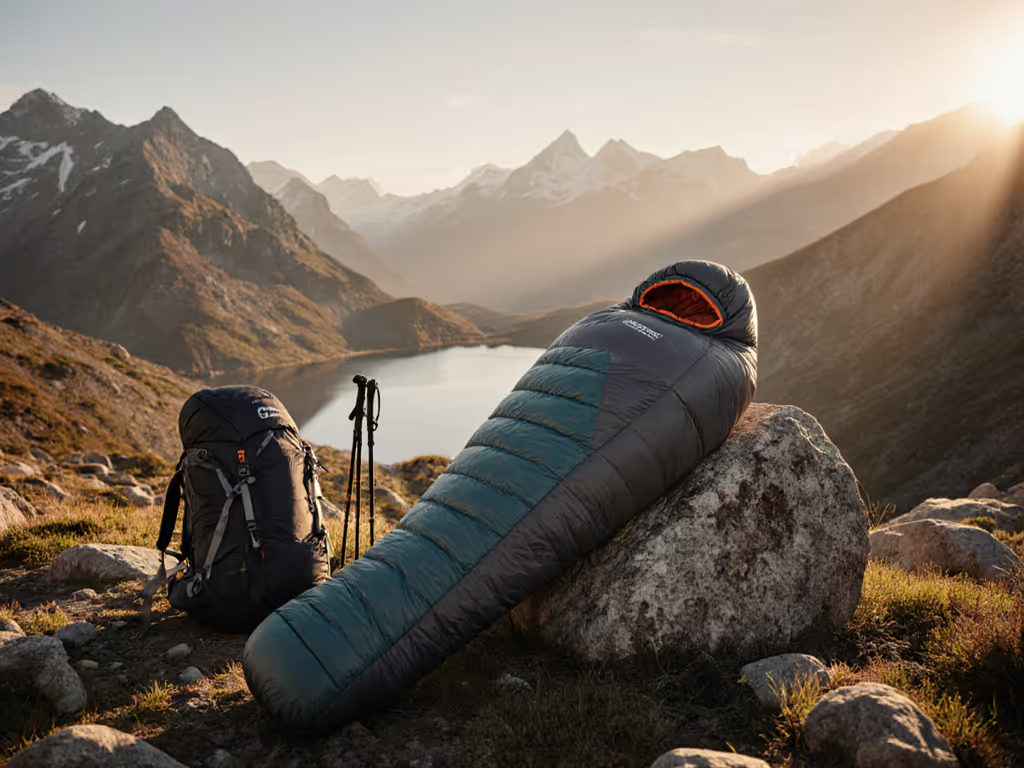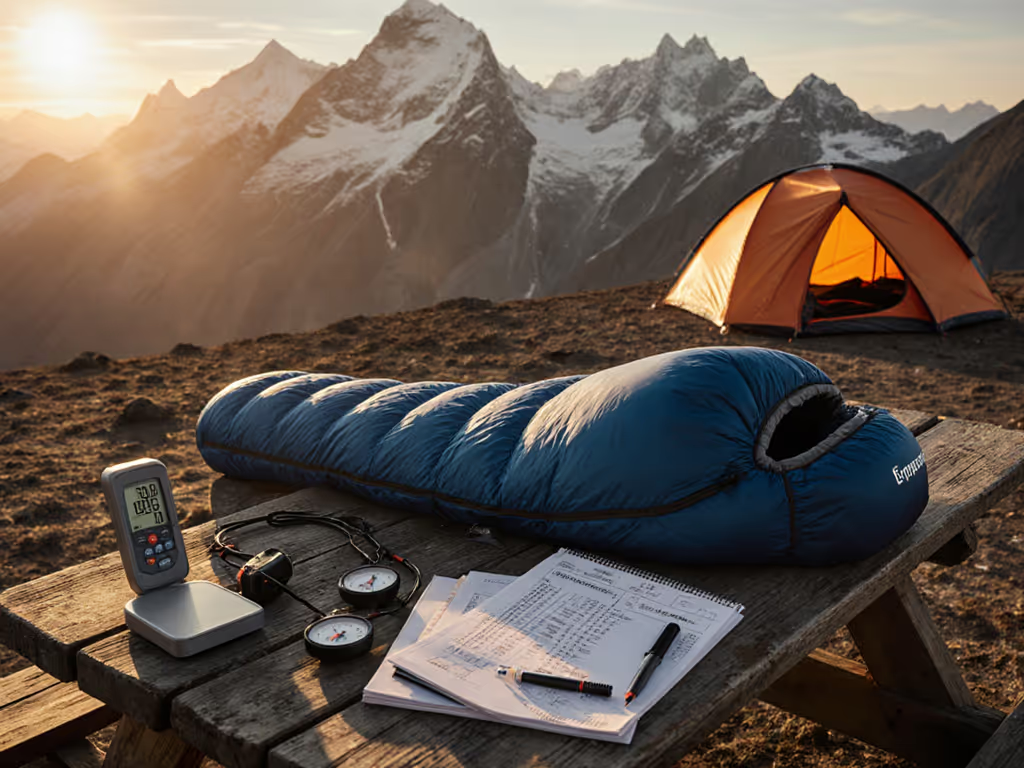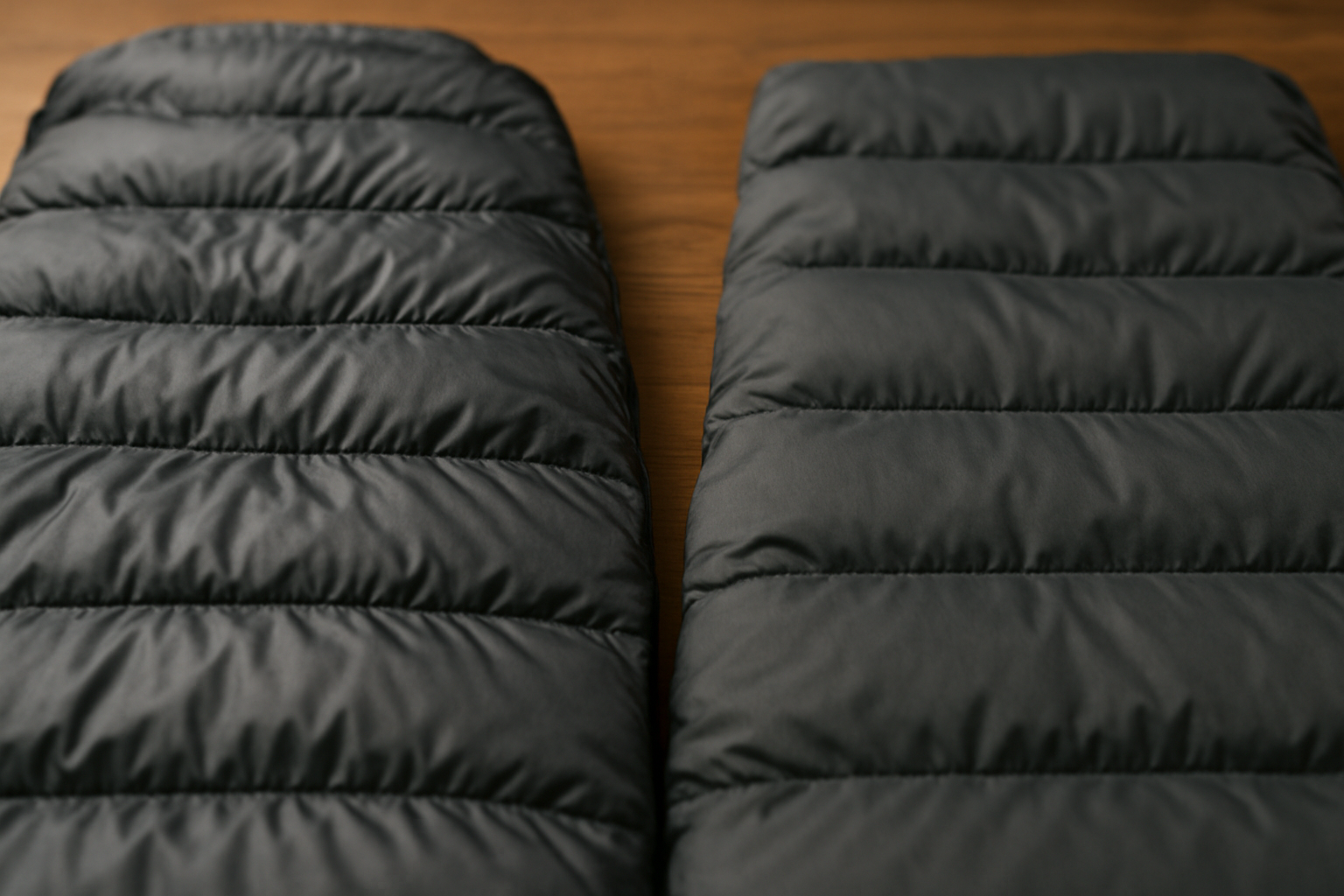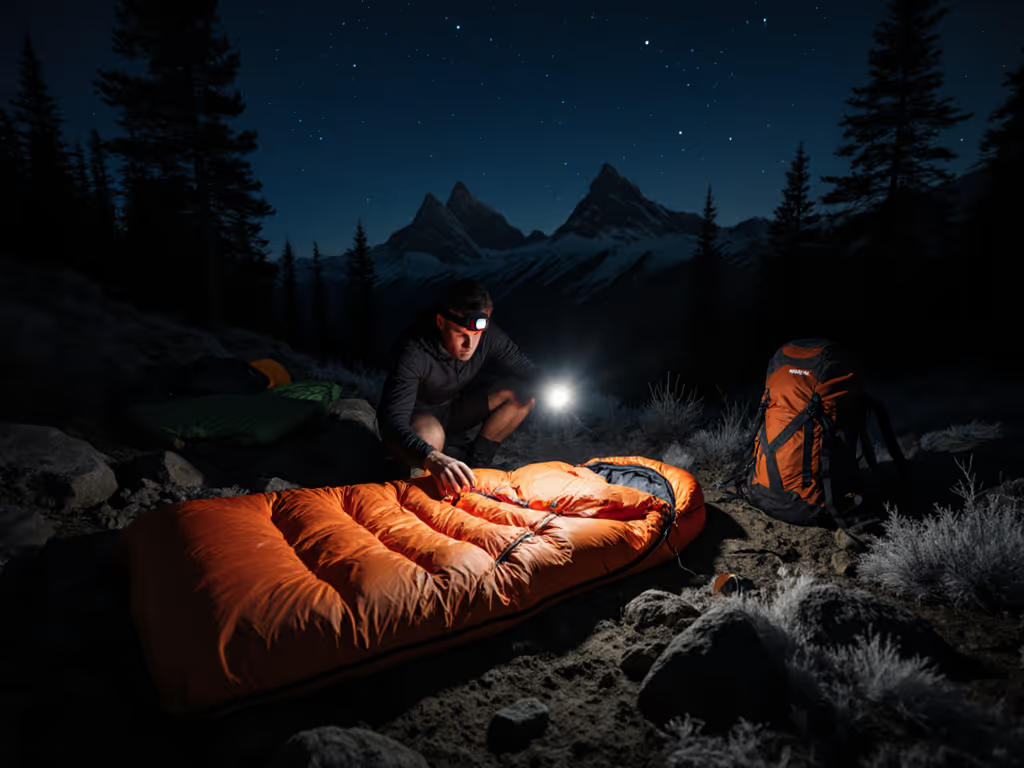
The Ultimate Ergopouch Bag Tog Reviews Guide: Decoding Warmth, Weight, and ISO Ratings for Backpackers

Searching for ergopouch bag tog reviews and wondering how any Thermal Overall Grade [TOG] number relates to real nights outdoors? You are not alone. Thermal Overall Grade [TOG] is a textile insulation measure commonly used for sleep sacks and bedding, while backpackers rely on International Organization for Standardization [ISO] 23537 or European Norm [EN] 13537 temperature ratings for sleeping bags. Bridging those systems can feel like translating between dialects. In this guide, Backpacker Sleep translates lab concepts into trail-ready guidance by explaining how Thermal Overall Grade [TOG] compares with International Organization for Standardization [ISO] warmth, how weight links to insulation type, and how fit, pad resistance value [R-value], and humidity shape your comfort. Along the way, you will get practical tips, comparison tables, and field-tested scenarios so you can choose a bag confidently, pack smart, and sleep warm.
What Thermal Overall Grade [TOG] Means vs International Organization for Standardization [ISO] and European Norm [EN] Standards for Backpackers
Thermal Overall Grade [TOG] quantifies how much thermal resistance a fabric system provides. Higher Thermal Overall Grade [TOG] means more insulation, but the number assumes an indoor or controlled environment, thin air layers, and minimal wind. By contrast, International Organization for Standardization [ISO] 23537 and European Norm [EN] 13537 measure sleeping bag performance on a heated manikin, yielding three familiar figures: comfort, limit, and extreme. For backpackers, the comfort rating (the temperature at which a cold sleeper rests comfortably) matters most, because it better predicts real nights. For a deeper dive into EN/ISO temperature ratings and how to interpret them, see our winter sleeping bag ratings guide. The catch is that Thermal Overall Grade [TOG] alone does not map cleanly to your camp since wind, humidity, your pad’s resistance value [R-value], and clothing layers all change outcomes.
Still, approximations help you compare reviews. If you see a Thermal Overall Grade [TOG] on a liner or sleep garment in ergopouch bag tog reviews, you can estimate its contribution to a backpacking system. Think of the sleeping system as a stack: base layers, liner or sleep clothing (sometimes listed with Thermal Overall Grade [TOG]), the bag’s International Organization for Standardization [ISO] rating, and your pad’s resistance value [R-value]. Each adds insulation, and the weakest link (often the pad) can dominate perceived warmth. Below is an illustrative translation to ground your expectations, assuming calm air, a well-pitched shelter, and a resistance value [R-value] 3 sleeping pad.
Approximate Thermal Overall Grade [TOG] to International Organization for Standardization [ISO] Comfort Context, Assuming Base Layers and Resistance Value [R-value] 3 Pad
| Garment or Liner Thermal Overall Grade [TOG] | Typical Use Context | Approx Effect on Perceived Bag Comfort | Seasonal Context |
|---|---|---|---|
| 0.2 to 0.5 Thermal Overall Grade [TOG] | Ultralight sleepwear for warm nights | Negligible; feels like a breathable layer | High summer, low elevation |
| 1.0 to 1.5 Thermal Overall Grade [TOG] | Light liner or thicker sleep top | May feel 1 to 2 Celsius degrees warmer | Late spring to early fall |
| 2.0 to 2.5 Thermal Overall Grade [TOG] | Insulating sleep set or thermal liner | May feel 2 to 4 Celsius degrees warmer | Shoulder seasons |
| 3.0 to 3.5 Thermal Overall Grade [TOG] | Warm thermal sleep system | May feel 4 to 6 Celsius degrees warmer | Cool nights near freezing |
Note: These are practical estimates, not strict conversions. Individual metabolism varies by 5 to 10 Celsius degrees, and wind, humidity, shelter quality, and resistance value [R-value] shift outcomes significantly.
Ergopouch Bag Tog Reviews: How to Read, Compare, and Convert
When you read ergopouch bag tog reviews, you will often see Thermal Overall Grade [TOG] attached to sleep sacks or wearable quilts. For backpackers, the key is translating that fabric-centric metric into your full sleep system. Start with your target International Organization for Standardization [ISO] comfort temperature based on the coldest expected night. Then ask: how much warmth can my planned base layers and any Thermal Overall Grade [TOG]-rated liners realistically add, and is my pad’s resistance value [R-value] sufficient for the ground temperatures I will face? If the reviews describe breathability, stretch, or fabric weight, connect those cues to moisture control and your ability to avoid clamminess that erodes warmth.
To compare across brands and systems, standardize your assumptions. Use your personal baseline: if you know you sleep cold, subtract 5 Celsius degrees from any International Organization for Standardization [ISO] comfort figure. If the item uses Thermal Overall Grade [TOG] without a sleeping bag rating, treat the Thermal Overall Grade [TOG] as a liner boost, not a bag’s primary temperature rating. Then, verify the pad’s resistance value [R-value]. On average, moving from a resistance value [R-value] 2 to resistance value [R-value] 4 pad can feel more impactful than adding a 1.5 Thermal Overall Grade [TOG] liner, especially below 5 Celsius degrees, because ground conduction is a large heat sink.
- Rule of thumb: prioritize International Organization for Standardization [ISO] bag comfort rating first, resistance value [R-value] second, Thermal Overall Grade [TOG] layers third.
- Seek reviews that mention wind, humidity, and shelter; those variables change real warmth more than small Thermal Overall Grade [TOG] differences.
- Aim for a bag whose International Organization for Standardization [ISO] comfort rating is 3 to 5 Celsius degrees lower than your expected low if you sleep cold, 0 to 2 Celsius degrees if you sleep warm.
Warmth-to-Weight: Down vs Synthetic and When Each Wins

For backpackers, warmth-to-weight is where grams meet comfort. High-fill-power down, measured in fill power [FP], offers unmatched loft per gram in dry, cold air. Synthetic fibers retain more warmth when damp and cost less, but they weigh more for the same temperature rating and compress less. Your choice should consider climate and trip length. In the wet, coastal shoulder seasons, many hikers prefer synthetic or water-resistant down with durable water repellent [DWR] shell fabrics. Comparing materials? Read our down vs synthetic sleeping bag tests for real-world moisture performance. In high, dry alpine summers, premium down shines. Reviews that only list Thermal Overall Grade [TOG] for a garment will not capture these trade-offs, so map the garment’s role to your bag and pad while weighing climate risk.
Cost, durability, and ethics also matter. Responsible Down Standard [RDS] down improves traceability, while recycled synthetics reduce petroleum demand. Field data suggest that well-cared-for down can last a decade of regular use, keeping its loft if you store it uncompressed and wash it sparingly with down-specific soap. Meanwhile, modern continuous-filament synthetics resist clumping better than older short-staple fills. If you are optimizing a system from ergopouch bag tog reviews, consider how adding a Thermal Overall Grade [TOG] thermal layer changes moisture dynamics inside a down bag; you may need more venting to prevent damp loft.
Insulation Snapshot for Backpackers
| Insulation | Warmth-to-Weight | When Damp | Packs Down | Typical Cost | Best For |
|---|---|---|---|---|---|
| High Fill Power Down (e.g., 800 to 950 fill power [FP]) | Excellent | Fair to poor without durable water repellent [DWR] shell management | Excellent | High | Cold, dry trips, ultralight goals |
| Hydrophobic Down (treated) | Excellent | Better than untreated down | Excellent | High | Variable humidity, shoulder seasons |
| Synthetic Continuous Filament | Good | Good warmth retention | Good | Moderate | Wet climates, budget builds |
| Synthetic Short Staple | Fair | Good warmth retention | Fair | Low to moderate | Occasional use, wet weekenders |
Fit, Pads, and Moisture: The Real-World Warmth System
Even the best International Organization for Standardization [ISO]-rated bag underperforms if it fits poorly. Too roomy and you are heating dead air; too tight and you compress insulation. Aim for a shoulder and hip girth that lets you turn without crushing loft. Next, confirm that your sleeping pad’s resistance value [R-value] matches the ground. Many cold-sleeping complaints trace back to pads. Industry testing shows that moving from a resistance value [R-value] 2 to resistance value [R-value] 4 can feel like upgrading your bag by a category because conduction losses drop substantially. Place a thin foam underlay beneath your inflatable in sub-freezing conditions to further boost resistance value [R-value].
Moisture control ties everything together. Get step-by-step tips in our guide to staying warm in your sleeping bag. Humidity and perspiration reduce loft and make air layers feel clammy, which your skin reads as cold. Choose breathable shells with durable water repellent [DWR], vent early before you sweat, and manage condensation in your shelter. If you add a high Thermal Overall Grade [TOG] sleep garment, you may trap more moisture; balance that with vented zippers or a slightly lower bag rating. Backpacker Sleep’s detailed guides break this down with simple decision trees so you can tune fit, resistance value [R-value], and venting for your climate, campsite, and metabolism.
- Fit check: You should easily bring knees up and rotate hips without compressing baffles.
- Pad pairing: Resistance value [R-value] 3 to 4 for shoulder seasons, resistance value [R-value] 5+ for winter camping.
- Moisture tactics: Vent zips early, use a dry sleep base layer, and air out your bag at sunrise.
Eco-Friendly Choices Without the Guesswork
Backpacking comfort should not cost the planet comfort. Look for Responsible Down Standard [RDS] certified down, recycled polyester shells, and per-fluorinated chemicals [PFC]-free durable water repellent [DWR] treatments. Many brands now publish life cycle assessment statements, highlighting reduced water and energy use. See our eco-friendly sleeping bags roundup for top sustainable picks with no performance trade-offs. From a systems view, buying a bag that truly matches your climate and lasts 8 to 10 years is often the greenest move. A well-chosen bag avoids the premature replacements common when warmth or fit misses the mark. If ergopouch bag tog reviews spark interest in layering sleep clothing, consider merino or recycled synthetics that resist odor and dry quickly so you can wash less and extend gear life.
Backpacker Sleep curates eco-forward options and explains trade-offs. For instance, a recycled synthetic bag may weigh 100 to 200 grams more than a comparable high fill power [FP] down bag, but it could excel in coastal humidity. A per-fluorinated chemicals [PFC]-free durable water repellent [DWR] shell might wet out sooner in sustained rain, but if you manage shelter ventilation and pack liner strategy well, the difference on a typical three-day trip may be negligible. With clear pros and cons presented alongside real-world warmth guidance, you can pick sustainability without sacrificing sleep.
- Certification shortcuts: Responsible Down Standard [RDS] for down traceability, Global Recycled Standard [GRS] for recycled content.
- Care to extend life: Store uncompressed, spot clean first, wash with appropriate detergents, and refresh durable water repellent [DWR] when needed.
- Waste less: Match International Organization for Standardization [ISO] comfort to your coldest realistic night, not a once-per-decade cold snap.
Field-Tested Scenarios and Buyer Profiles

Let us connect the dots with examples. Imagine a summer high-desert trek with lows around 10 Celsius degrees, dry air, and light winds. You are eyeing ergopouch bag tog reviews for a Thermal Overall Grade [TOG] 1.0 sleep garment to pair with an ultralight quilt. Using our table, that garment might add 1 to 2 Celsius degrees of perceived warmth. If your quilt’s International Organization for Standardization [ISO]-equivalent comfort is 10 Celsius degrees and your pad is resistance value [R-value] 2.5, you would likely be fine if you sleep warm. A cold sleeper could either bump pad resistance value [R-value] or drop to a 7 Celsius degree comfort quilt. Backpacker Sleep’s comparison charts make these calls quick by showing total system impact.
Next, think shoulder-season forests where nightly lows swing between 2 and 5 Celsius degrees and humidity hangs near 85 percent after rain. A 2.5 Thermal Overall Grade [TOG] liner or sleep garment can add noticeable warmth, but damp air reduces perceived benefit. Here, we suggest prioritizing a bag with a comfort rating around 0 to 2 Celsius degrees and a resistance value [R-value] 4 to 5 pad. Synthetic insulation or hydrophobic down with a robust durable water repellent [DWR] shell pays off. You can then use the 2.5 Thermal Overall Grade [TOG] layer as a buffer on colder nights or as your campwear, increasing versatility across trips.
Finally, for a fast-and-light alpine mission with a forecast around minus 3 Celsius degrees and gusts at camp, garment Thermal Overall Grade [TOG] takes a back seat to shelter and pad strategy. Choose a bag with an International Organization for Standardization [ISO] comfort near minus 6 Celsius degrees, pair it with a resistance value [R-value] 5.5+ pad stack, and plan wind protection. Add a 1.5 Thermal Overall Grade [TOG] base set only if you tend to sweat at night, since it can help buffer against clammy shells. As always, Backpacker Sleep’s practical checklists keep each variable visible so no single weak link undermines your night’s rest.
Quick Reference: Picking Your System Step by Step
- Set your target temperature: use local lows, then adjust for your metabolism and shelter. If unsure, subtract 3 to 5 Celsius degrees from the forecast.
- Pick the bag by International Organization for Standardization [ISO] comfort, not limit. Cold sleepers choose comfort a few degrees below the forecast low.
- Match the pad to the ground: resistance value [R-value] 3+ for cool spring and fall, resistance value [R-value] 4.5+ for frost, resistance value [R-value] 5+ for snow.
- Layer smart: treat Thermal Overall Grade [TOG]-rated garments as incremental boosts, not primary ratings. Use our table as a practical guide.
- Plan for moisture: prioritize breathable shells with durable water repellent [DWR], manage venting, and keep a dry sleep base layer.
- Weigh sustainability: consider Responsible Down Standard [RDS] down and recycled synthetics, and buy once by fitting your real conditions.
How Backpacker Sleep Makes This Easy
Many backpackers struggle to select the right sleeping bag that balances warmth, weight, and comfort, leading to confusion when faced with technical lab ratings and diverse conditions. Backpacker Sleep solves this by translating lab numbers into clear choices. We publish comprehensive reviews on sleeping bags for various conditions, pairing International Organization for Standardization [ISO] and European Norm [EN] data with field notes you can trust. Our detailed guides simplify lab ratings and real-world warmth, explaining how Thermal Overall Grade [TOG] garments, resistance value [R-value] pads, and insulation type combine to create a comfortable night. We highlight eco-friendly options so you can align performance with values.
Expect side-by-side comparison tables, decision trees, and buyer profiles built from thousands of reader questions and our own testing. Whether you are cross-reading ergopouch bag tog reviews or weighing two International Organization for Standardization [ISO] 23537-rated bags, we show the practical deltas: how many grams you save, how many Celsius degrees you gain, and what happens when wind or condensation intrudes. We keep the language plain, the assumptions transparent, and the recommendations specific, so your sleep system feels dialed from the first pitch to the last sunrise.
Your path to better sleep is clarity plus context. Imagine opening your pack knowing your bag, pad, and layers are balanced for the coldest hour before dawn. In the next 12 months, small gains in fit, resistance value [R-value], and moisture control could add hours of quality rest to every trip. As you digest these insights and scan ergopouch bag tog reviews with fresh eyes, what single tweak will you make first to sleep warmer without carrying more?
Additional Resources
Explore these authoritative resources to dive deeper into ergopouch bag tog reviews.
- Amazon.com: ergoPouch Cocoon Swaddle Sack 0.2 TOG - Baby ...
- Ergopouch Sleeping Bag Review/Guide - Sheeting vs Jersey - Reddit
Master Ergopouch Bag Tog Reviews With Backpacker Sleep
Through comprehensive reviews, we translate International Organization for Standardization [ISO] lab ratings and guide fit, insulation, and eco choices, helping backpackers, hikers, and campers pick comfortable, suitable sleeping bags.
Related Articles



Patriot Wholesale Emergency Sleeping Bag Reviews: 7 Buyer Warnings Every Camper Should Know (Reviewed — Backpacker Sleep does not sell these products)
Unlock actionable ideas for Patriot Wholesale Emergency Sleeping Bag Reviews: 7 Buyer Warnings Every Camper Should Know with step-by-step tips and…

